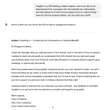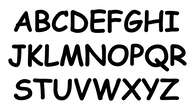Recent headlines have demonstrated a clear desire for many organizations to return to work models of the past—in some cases as a misguided attempt to yield better results. Yet, employee exodus combined with recruitment challenges are once again revealing that work in the 21st century must adapt, and not at the expense of productivity and outcomes. While many companies are making headlines by calling employees back to the office with blanket mandates, we’ve pioneered a different path forward at Organic Valley with a more dynamic and creative approach that is proving beneficial to our employees and our business.
By putting collaboration, innovation, and employee well-being at the forefront, we’ve created an environment where everyone can contribute to shared success and where recruitment, often a challenge in our rural location, is dramatically improved. We’ve decided against one-size-fits-all approaches, and instead are reimagining the workplace to align with our mission, values, and business goals.
Already, we have seen a dramatic improvement in recruitment. We are headquartered in La Farge, Wisconsin, a town of just 700 people—and we have nearly 1,000 employees. This brings with it a unique culture and a unique challenge in hiring and retaining top talent. By creating a hybrid work model and featuring that in our recruitment, we have seen a remarkable surge in well-qualified job applicants.
A consistent model
Our case for change began post-COVID when we were experiencing inconsistent work expectations across departments. Some managers wanted teams in the office more frequently while others were more flexible. Some teams embraced technology and others were resistant. Some employees preferred the office while others felt more productive at home. These contradictions created an environment where few were satisfied, while the demands of the business continued to intensify.
There was urgency for a solution, so we set out to create a model that could be consistently applied across our organization yet offered employee flexibility and choice. We created a new hybrid work model which strikes a delicate balance between in-office collaboration and the freedom of remote work. Our employees can thrive in an environment that respects their need for focus time at home, without sacrificing valuable interactions in the office.
Our DIY hybrid work model for office employees is based on three job classifications:
Low hybrid: Employees split their time between office and remote locations. This model necessitates a substantial presence in the office—at least three days per week—for collaboration and meetings. It offers three weeks annually of “work from anywhere” time. Remote work is dedicated to tasks that require deep focus, while providing a dedicated workspace in the office and access to all office amenities.
High hybrid: Employees primarily work remotely but visit the office occasionally. Office visits range from four to eight days per month, focusing on critical meetings, team-building, or in-person projects. This approach offers flexibility for work-life balance while ensuring employees remain engaged with the company culture. When in the office, employees must reserve a workspace for use.
Remote: Employees work entirely from locations outside the office, ideal for those who have relocated or prefer full remote work. This approach leverages digital communication and collaboration tools. Working remotely also can facilitate faster travel to business-critical locations like regional farms, customers, and manufacturing facilities. Office visits are expected at least four times per year to maintain cultural connection and alignment with the broader team.
A cross-functional committee decides each job’s classification eligibility, and then office employees choose which designation works best for them between high hybrid, low hybrid, and remote selections. This is an annual selection. By allowing choice, we believe we are helping improve the lives of employees, managers, teams, and the entire cooperative. However, the transition to a hybrid work model does create some hurdles to overcome.
Make expectations clear
Ensuring team members have a detailed work plan with clear job expectations is critical to maintaining accountability and driving results. We had to develop enhanced space reservation software and create new space management, helping the team adapt to space changes. Creating an environment of continual feedback for ongoing modifications has been important as well—like the exploration of future tech to better facilitate seamless collaboration regardless of where our team members are physically located.
So, what’s happened since we implemented this approach? Our turnover numbers have improved significantly. We’ve seen a rise in engagement survey scores—most notably in overall engagement, recommending this as a great place to work, and confidence in leadership—and we’re on track to achieve our key business results for the second straight year.
As we navigate the complexities of the modern work environment, we remain committed to pioneering approaches that support our employees and drive our business forward. For that reason, we’re proud to lead a hybrid work model that reflects our commitment to our people, our business, and our purpose in a rapidly changing world. Organic Valley’s hybrid work model is a testament to our belief that when employees thrive, so does the organization.
Jeff Frank is CEO of Organic Valley.







No comments